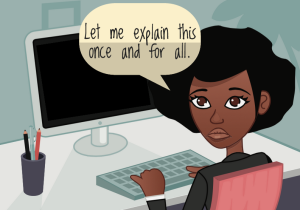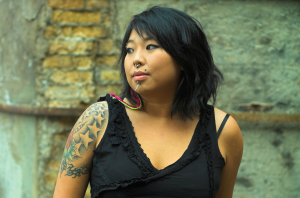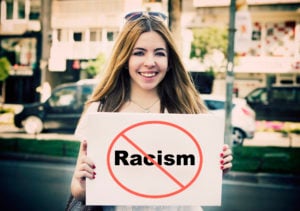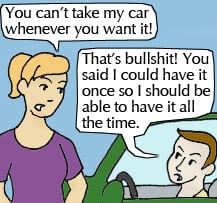
Source: Getty Images
One manner in which Men’s Rights Activists derail feminist arguments is alluding to instances in which women supposedly experience privilege.
Often, they use the court system – and custody battles in particular – as an example.
So I decided to research this topic with every intention of creating a piece about how institutional sexism in the legal system affects men, too.
But the results of my research were surprising, to say the least.
It’s true that mothers are more likely to receive custody of their children in a divorce. But the source of the bias is not in the courts – it’s in the marriage.
(Note: Before I go any further, please note that this article refers to the unique manifestation of patriarchy in straight marriages between a woman and a man. The term “straight” is referring to the relationship and not the sexual orientation of each individual person and is not intended to erase people who are bisexual, pansexual, asexual, and/or queer and are currently in a relationship with someone of a different gender. Also same-sex marriage is a considerably younger institution, and the divorce rates are drastically lower. In fact, states that allow same sex marriage have lower divorce rates overall. Same-sex marriage may even improve the institution of marriage, but I digress.)
Straight Marriage Struggles
The institution of straight marriage perpetuates patriarchal gender roles during marriage as well as during its complement, divorce.
The same unfair assumptions that undermine the tradition of straight marriage are the ones that mire their divorces.
Statistically, it appears that the family courts in the United States are biased against fathers.
For example, 83% of mothers receive custody of their children in divorces. Additionally, men are awarded less support on average than mothers who are awarded support.
There is also plenty of anecdotal evidence citing situations where mothers were awarded custody in spite of fathers demonstrating interest and potential to provide and care for their children.
There are even organizations that exist to protect fathers’ rights.
Unfortunately, these organizations are missing the mark. I think they are even guilty of selective fact finding and misplacing blame on mothers or even on biased courts.
There are three main problems with their arguments:
1. They draw incomplete conclusions from the divorce statistics.
On the surface, the custody and support averages are skewed toward women.
There are organizations that demonstrate unfair court bias against men with statistics, but they ignore that the outcomes of these institutions are a manifestation of the patriarchy in our very own society.
Even if the courts are biased, they are not biased because they dislike men.
They are biased because they are reflecting the patriarchal notion that men are not meant to be caregivers and that women are not mean to breadwinners.
2. They demonize women.
Oftentimes, these arguments simply blame women.
Some say nasty (even abusive) mothers manipulate the laws that are already pitched in their favor in order to keep children away from their fathers.
They call this malicious mother syndrome.
Is there some basis for this stereotype? Unfortunately, yes.
But is that the norm? No way.
Saying that all mothers – or even most mothers – who file for divorce want to keep their children from their fathers out of spite with utter disregard for the children’s best interest and relationship is unfair and unfounded.
In fact, the majority of custody settlements – even those that favor the mother – are reached by mutual agreements outside of the courtroom.
That means that both parties agree in these situations that the mother should have custody.
This is also an unfair manifestation of patriarchal gender expectations in marriage – and those expectations are self-imposed.
3. They value fathers’ rights over children’s rights.
The greatest issue with some of these fathers’ rights organizations is that they put personal rights and interests over the rights of the children.
There are extenuating circumstances when mothers (and fathers) are not suited to be in their children’s lives. But more often than not, children benefit from having both their mother and their father in the picture.
Unfortunately, often these organizations offer methods to minimize child support. That sort of greed has a direct effect on the daily lives of children.
Finally, these organizations advocate for laws that allow abusive fathers to have rights to their children because they believe these laws are manipulated to advantage women.
Not every fathers’ rights group is guilty of this, but many of them are. Although fathers have the right to be involved in their children’s lives, they also need to put the rights and needs of the children before their own.
In lieu of recent fathers’ rights movements, research has surfaced that demonstrates how the family courts hurt women as well. For example, victims of domestic violence are often characterized as unfit for parenting.
Although many of these organizations have terrible means to achieving fathers’ rights, they are motivated by a good central goal: They want to change the assumptions surrounding the role of a father in marriage and divorce.
They do not believe it is fair that more women are receiving custody at higher rates.
And although I disagree with their characterization of the causes of this imbalance, I can empathize with their intentions.
So if the bias against fathers is not coming from the court system, where is it coming from?
Gender Roles
As I mentioned earlier, the majority of these custody agreements are decided outside of a courtroom.
That means that the gender roles that are perpetuated in straight marriage are translating into divorce, often without the force of law.
The truth is: If we are going to equalize straight divorces, we need to equalize straight marriages.
Unfortunately, patriarchal gender norms hurt divorce just as much as they hurt marriage.
Marriages based on equality, lead to better co-parenting after divorce.
If we want to encourage co-parenting during and after divorce, some changes to straight marriage have to occur first:
1. Encourage fathers to nurture.
One detrimental result of restrictive gender roles is that fathers are discouraged from nurturing their children.
By telling fathers that nurturing is meant for mothers, we are encouraging their absence during pregnancy, birth, and beyond.
Using an evolutionary defense to discourage fathers from bonding with and nurturing their children just creates unnecessarily absent fathers. A plethora of studies suggest that these assumptions are wrong as well.
In fact, men may even experience hormonal changes once they become fathers in order to facilitate their roles as caregivers.
In order to improve fathers’ relationships with their children after divorce, the relationships need to be stronger during the marriage and encouraging fathers to take on caregiving roles creates the strong relationship.
2. Encourage mothers who want to have careers.
The same narrow gender roles that keep men from caregiving keep mothers from maintaining their careers.
Women are entitled to choose which caregiver model works best for them.
Some choose to be full time caregivers, and that is awesome!
Others would prefer to continue their careers, and that is also awesome!
Unfortunately, women who choose to stay in their careers are often accused of being bad mothers.
This is presumptuous and empirically incorrect. Of the many aspects of parenting that positively or negatively affect a child’s outcome, exclusive maternal caregiving is not a factor.
That’s right! No matter what you mother-in-law says. Moms who work and share caregiving roles are not harming their children’s development.
On the other hand, having two involved caregivers has demonstrated tangible benefits.
Not only is the male breadwinner model terribly presumptuous and empirically wrong, it also puts undue pressure on fathers to be sole breadwinners and discourages them from participating parenting responsibilities.
Even when women choose to be full time caregivers, that does not mean men should not participate. Their relationship with their children is still important – and full-time caregiving mothers need self-care time.
3. Encourage parents to share family and domestic responsibilities equally.
Even in families where both parents work, women still spend more hours per week providing primary care.
As demonstrated in the earlier points, men and women are both capable of equal participation in and outside of the home.
In order for fathers to be considered equally worthy caregivers in the eyes of the court, they must first be equal caregivers within the home.
Further, most custody arrangements are decided between parents. Fathers must create bonds with their children through caregiving and demonstrate a commitment their children in order to defy the unfair gender stereotypes that define their position in the family.
In fact, studies have shown that when both parents work full-time and mothers are still providing the majority of the housework, they are more likely to be unhappy and seek divorce.
An equal division of caregiving and housework is the product of an equal partnership!
Not only are equal partnerships important in marriage, but they also equate to good co-parenting in the event of a divorce.
Working on improving all three of these in straight marriages could even lead to a decline in divorce.
***
Patriarchy hurts everyone. Marriage and divorce are a perfect example of that.
Patriarchy tells us that fathers should be disconnected from the home. It tells us that mothers must leave their careers no matter how fulfilling. It tells us that fathers do not nurture, and mothers cannot have careers.
And it affects how custody battles are eventually ruled – and not because the court is particularly in favor of women.
So if we want to change the role of fathers in divorce, we must first address the roles of fathers in the home.
[do_widget id=”text-101″]
Nina is a recent graduate from Villanova University with a B.A. in Political Science and Health Care Ethics and is heading to Seton Hall University School of Law in the fall. When she is not combatting patriarchy, oppression, and rape culture through various campaigns on her college campus, she is nose deep in a plethora of constitutions (for fun). Follow her on Twitter @NinaTonyTro and check out her blog!
Search our 3000+ articles!
Read our articles about:
Our online racial justice training
Used by hundreds of universities, non-profits, and businesses.
Click to learn more




















